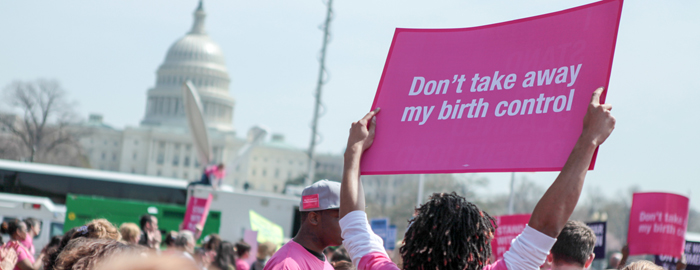By Jim Sedlak
It was 1998. Planned Parenthood Federation of America was at the top of its game and feeling invincible. In Orange County, California, Planned Parenthood decided to expand its business by signing a contract with Southern California Permanente Medical Group to have it begin referring patients to Planned Parenthood clinics in three counties. The good news for Planned Parenthood is that it got the contract and, thereby, increased its business income. There was only one problem: What Planned Parenthood did was illegal. There were regulations in the state of California that forbade nonprofit corporations from competing with for-profit corporations for this kind of business.
Not surprisingly, in January 1999, a for-profit corporation, Family Planning Associates, filed suit against Planned Parenthood. The suit said Southern California Permanente previously contracted with Family Planning Associates for the same services and Planned Parenthood illegally stole its business. The suit sought unspecified damages for alleged unfair competition, unfair business practices, and interference with its contract. Legal analysists thought FPA had a solid case.
The suit went to trial and STOPP received reports from the courtroom that things were going in FPA’s favor. Then, on the second day of the trial, the California State Legislature passed a new law making what Planned Parenthood had done legal. The trial was over. The judge ordered FPA and PP to reach a settlement. Planned Parenthood had violated the law and, when an attempt was made to bring it to justice, friends of PP just changed the law.
Fast forward 15 years and Planned Parenthood was, once again, simply ignoring government regulations and doing what it wanted. In 2000, the Food and Drug Administration approved the use of two drugs—mifepristone and misoprostol—to be used for what has become known as medication (abortion pill) abortions. In approving medication abortions, the FDA established a strict protocol. It said the drugs had to be dispensed under the direction of a physician and that three clinic visits were required by the woman: the first to take mifepristone; a second visit one to two days later to take misoprostol; and a third two weeks later to be sure the abortion was completed. It also said the procedure could only be used up to 49 days (seven weeks) gestation.
Planned Parenthood jumped at the chance to do medication abortions. However, it did not like all the restrictions of the FDA regulations, so it ignored them. PP advertised it would give the pill up to 63 days (nine weeks) gestation. Some of its centers went up to 10 weeks. In addition, the woman would go into PP for the first pill, would be sent home to take the second pill alone, and was told to go to an emergency room if there were any problems. Almost immediately, women began having serious medical problems. In 2003, a Planned Parenthood patient named Holly Patterson suffered sepsis shock and died. The FDA reported in 2011 that over a dozen women died and thousands have suffered sometimes severe medical problems after abortion pill abortions.
Many states across the United States have reacted to the growing problem by passing laws that anyone committing medication abortions, including PP, must adhere to the FDA guidelines. This was not greeted favorably by Planned Parenthood because, just as in the case of violating the law in California in the 1990s, Planned Parenthood wants to do what Planned Parenthood wants to do.
To help the reader understand how important this medication abortion business is to Planned Parenthood, it is currently estimated that there are a total of 214 abortion facilities across the country that specialize in medication abortions. Planned Parenthood runs 189 (88 percent) of those facilities. In fact, PP operates more medication-only abortion centers than it does surgical abortion centers.
With the growing threat of state regulations, Planned Parenthood once again turned to its political allies. This time it was the Obama administration. Last week, the Food and Drug Administration changed the protocol for medication abortions. The major changes (from the original approval in the year 2000) are:
- It is now approved for use up to 70 days gestation (10 weeks) instead of up to 49 days (seven weeks).
- The first pill (mifepristone) no longer requires supervision of a physician to dispense it to the patient. The new protocol allows other healthcare providers to dispense it as long as they have authority to prescribe medication (e.g., nurse practitioners in some states).
- The second pill (misoprostol) can now be taken at home by the woman. The need for a second visit to the physician—something that was required in the 2000 approval—no longer exists. (A follow-up appointment is still recommended 7-14 days after taking the mifepristone.)
Clearly, this is another case of Planned Parenthood using friendly politicians and bureaucrats to get what it wants. If you think PP didn’t know ahead of time that this change was coming, just remember that, in 2015 alone, PP had 25 of its centers initiate the “service” of medication abortions.
We are quickly moving to where Planned Parenthood is taking over all levels of government through its political influence and its financing of candidates for office. The American taxpayer gives Planned Parenthood over $550 million a year, but has no control over what it does. If we don’t want our country to become the United States of Planned Parenthood, we need to stop this organization now.



